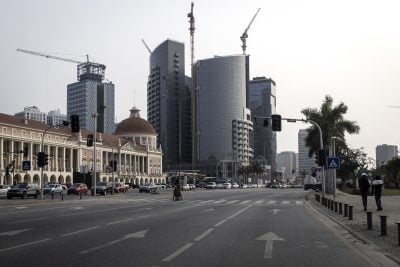As with so many other commodities, the bulk of Africa’s cocoa and coffee exports are shipped in an unprocessed form. However, a number of governments have now pledged to add more value to their exports, as these two case studies reveal.
Adding value to West African cocoa
African producers of most agricultural commodities must compete with their rivals worldwide, but given the concentration of cocoa cultivation in a handful of countries – mainly in West Africa – it is perhaps surprising there has not been more cooperation between producing nations.
Global trade rules place restrictions on price fixing but there is scope for some kind of OPEC-style coordination.
Côte d’Ivoire and Ghana remain the world’s biggest and second biggest cocoa producers respectively, jointly accounting for about two-thirds of global output. Long-running cocoa smuggling across their common land border that takes advantage of differences in regulated prices should also have encouraged them to pursue joint sector management. Yet their rivalry has seen them fail to capitalise on their dominant position.
However, in June the governments of Ghana and Côte d’Ivoire announced that they had agreed not to sell cocoa for less than $2,600 a tonne in an effort to boost farmers’ income. Their efforts to ensure better prices could partly be related to the elections due in both countries next year.
Exports from Ghana and Côte d’Ivoire were blocked for a month to push prices up to the new minimum level. International chocolate manufacturers successfully lobbied for the ban to be lifted but Accra and Abidjan did not weaken for long.
There is a big gap between the prices paid to farmers and export prices. After three years of no change, Accra agreed to increase the price paid to its farmers by 5.2% this year, while Côte d’Ivoire’s president, Alassane Ouattara, recently said that he wants farmers to have a guaranteed price of CFA1,000 a kilo ($1.71 a kilo).
Higher prices should also encourage more investment in the industry but this would be a double-edged sword, in that higher production would depress international prices, already buoyed by the impact of low rainfall and crop disease on Ghanaian and Ivorian production.
Moreover, the big difference between the oil and cocoa industries is that oil can be left in the ground on productive fields until prices recover. Cocoa beans still need to be harvested and there is currently insufficient temperature-controlled warehousing in West Africa to allow producers to store beans for long periods.
World Bank support
In mid-August, the World Bank announced that it would invest US$300m in the Ghanaian cocoa industry over the period 2019-24, including in adding value by promoting processing and manufacturing. As with so many other African commodities, too little West African cocoa is used to make chocolate within the region. As a result, only 7% of the $9bn generated by the global cocoa industry makes its way to producers.
The Bank will work alongside the government and the Ghana Cocoa Board (Cocobod) on promoting local processing and on increasing productivity. The Bank has set a goal of increasing average production from 300kg/hectare to 2t/hectare through education and more access to better quality seedlings and fertiliser.
Cameroon, Africa’s third biggest cocoa producer, is investing in more processing capacity if not manufacturing. The Barry Callebaut plant has increased its capacity from 35,000t a year (t/y) to 50,000 t/y, while a new 30,000 t/y plant has opened in Kekem. In addition, Atlantic Cocoa Corporation is one of the first tenants at the new industrial zone in Kribi port. Its factory is under construction, with an initial production capacity of 32,000 t/y, which could rise to 60,000 t/y in the second phase.
Marketing African coffee
As in the cocoa sector, the bulk of African coffee exports are shipped in an unprocessed form but here too governments have pledged to add more value to their exports. For instance, the government of Ethiopia has announced plans to develop a coffee park on the outskirts of Addis Ababa with support from the governments of South Korea and China.
A total of US$50m will be invested over the next three years and the project will support the Ethiopian Coffee and Tea Authority’s (ECTA) campaign to promote Ethiopian coffee to more discerning coffee drinkers around the world.
Ethiopia’s relationship with coffee is very different to that of most other African countries with their big commodities as it consumes about half of its annual production.
The main current markets for Ethiopian coffee are in the Middle East but the ECTA and the government are particularly keen to market their varieties in China. According to official figures, Ethiopia earned US$1.2bn from coffee and oilseed exports combined in the financial year 2018-19.
Given the change underway in the Chinese economy towards domestic consumption – and amid predictions of a boom in Chinese cafe culture – this campaign seems well timed. China and Ethiopia enjoy a relatively close economic relationship, with Chinese investment helping to underpin continued high levels of growth in the Ethiopian economy. New companies are being set up specifically to market Ethiopian coffee in China. Melange Coffee Roasters, which roasts and packages its own coffee, has secured a contract to supply 1,000 tonnes a year (t/y) and began shipping to Chinese customers in August.
Yohanes Addis, sales and marketing manager for Alfoz, one of Ethiopia’s main coffee companies, said: “As the interest from China for coffee in general and Ethiopian produced coffee, in particular, increased over the past few years, we are also looking for opportunities on how to better penetrate the market there in China.” The ECTA has set a target of increasing national production from about 600,000 t/y at present to 1.8m t/y by 2024. Ethiopia produced 7.7m 60kg bags of Arabica coffee in 2017-18, making it Africa’s biggest producer of Arabica, but behind Uganda in terms of total coffee production.
Big ambitions for Kampala
Uganda has set a similarly ambitious goal: of increasing exports to 20m 60kg bags of coffee a year by 2020, despite the fact that it shipped just 4.6m bags last year. Ugandan coffee is mainly sold in Western Europe but also the United States and India, while other African markets are growing in importance, accounting for 13.3% of total Ugandan coffee exports in June. Exports generated US$416m in the year to the end of June, down 15% on the previous year. The fall was the result of lower production, last year’s drought and the impact of higher global production on prices.
The Ugandan parliament is currently debating new coffee sector legislation relating to the entire value chain, including the introduction of an auction system for trade in coffee. In particular, the government is concerned that quality levels have declined recently and wants to ensure that they recover through the introduction of a more comprehensive inspection regime. All farmers with more than 50 trees must register on the new national database and thereby make themselves open for inspection.
However, it has been reported in the country that the National Coffee Research Institute is concerned about the impact on the hundreds of thousands of small scale farmers who dominate the industry. Only 2% of farmers are regarded as being large-scale – those with at least four hectares under cultivation.
Want to continue reading? Subscribe today.
You've read all your free articles for this month! Subscribe now to enjoy full access to our content.
Digital Monthly
£8.00 / month
Receive full unlimited access to our articles, opinions, podcasts and more.
Digital Yearly
£70.00 / year
Our best value offer - save £26 and gain access to all of our digital content for an entire year!
 Sign in with Google
Sign in with Google 


